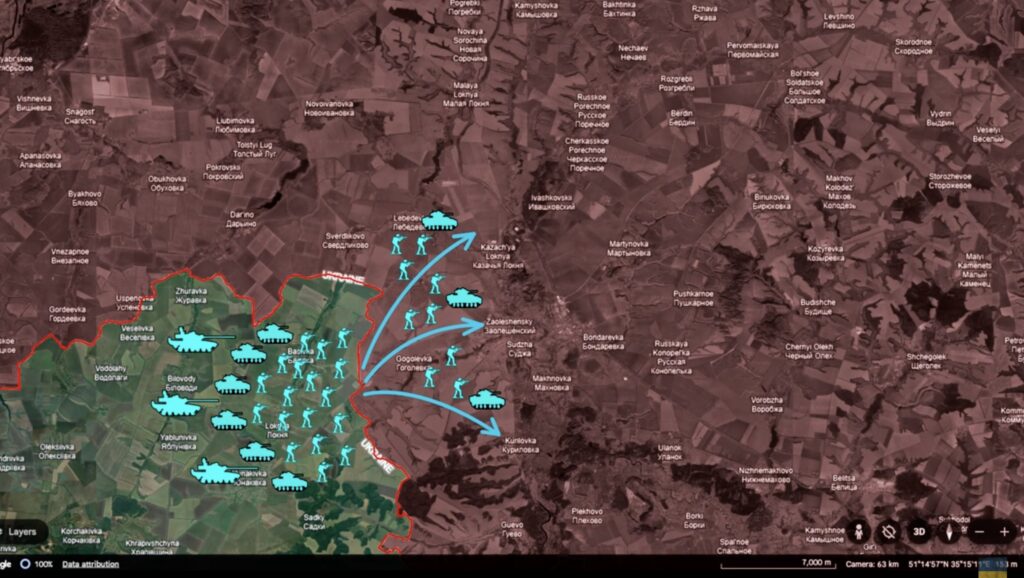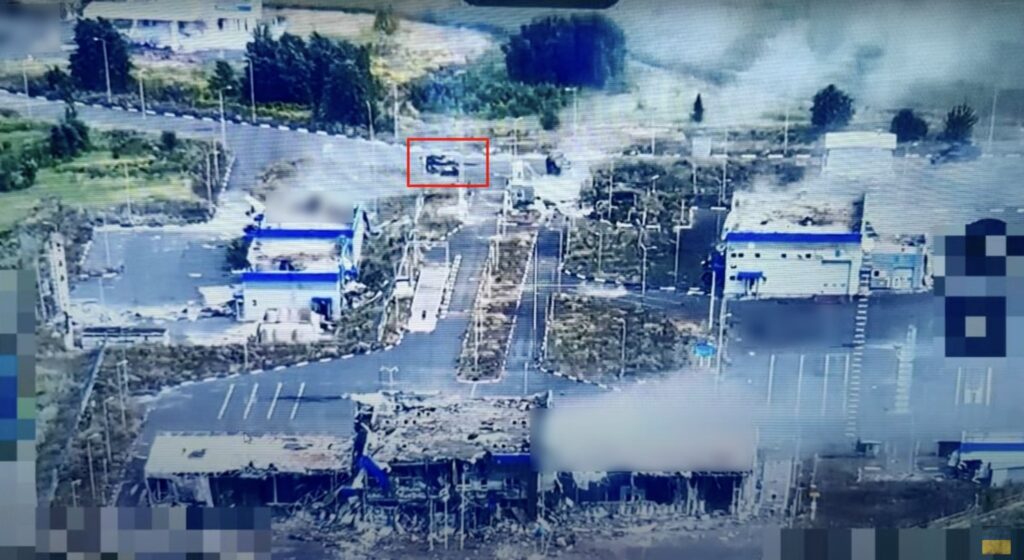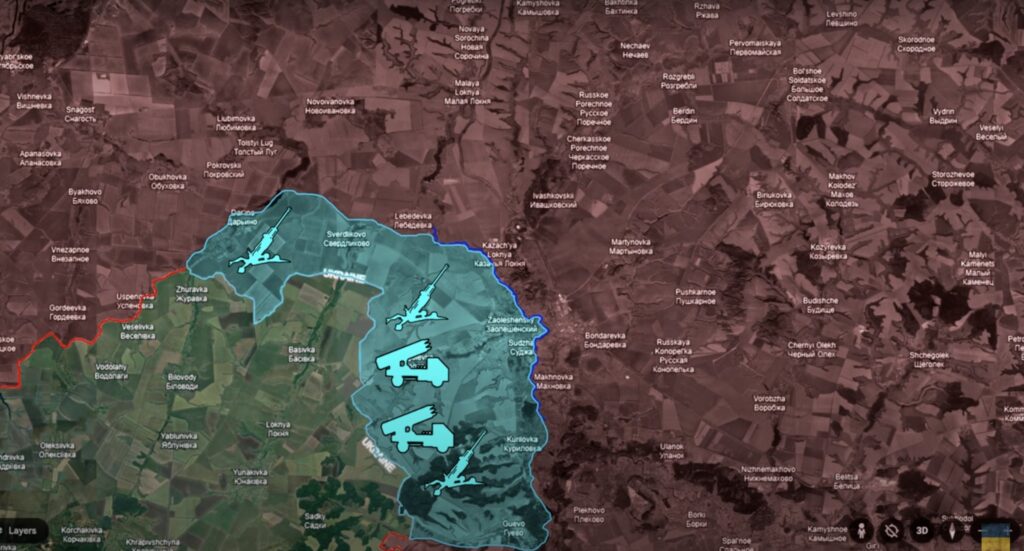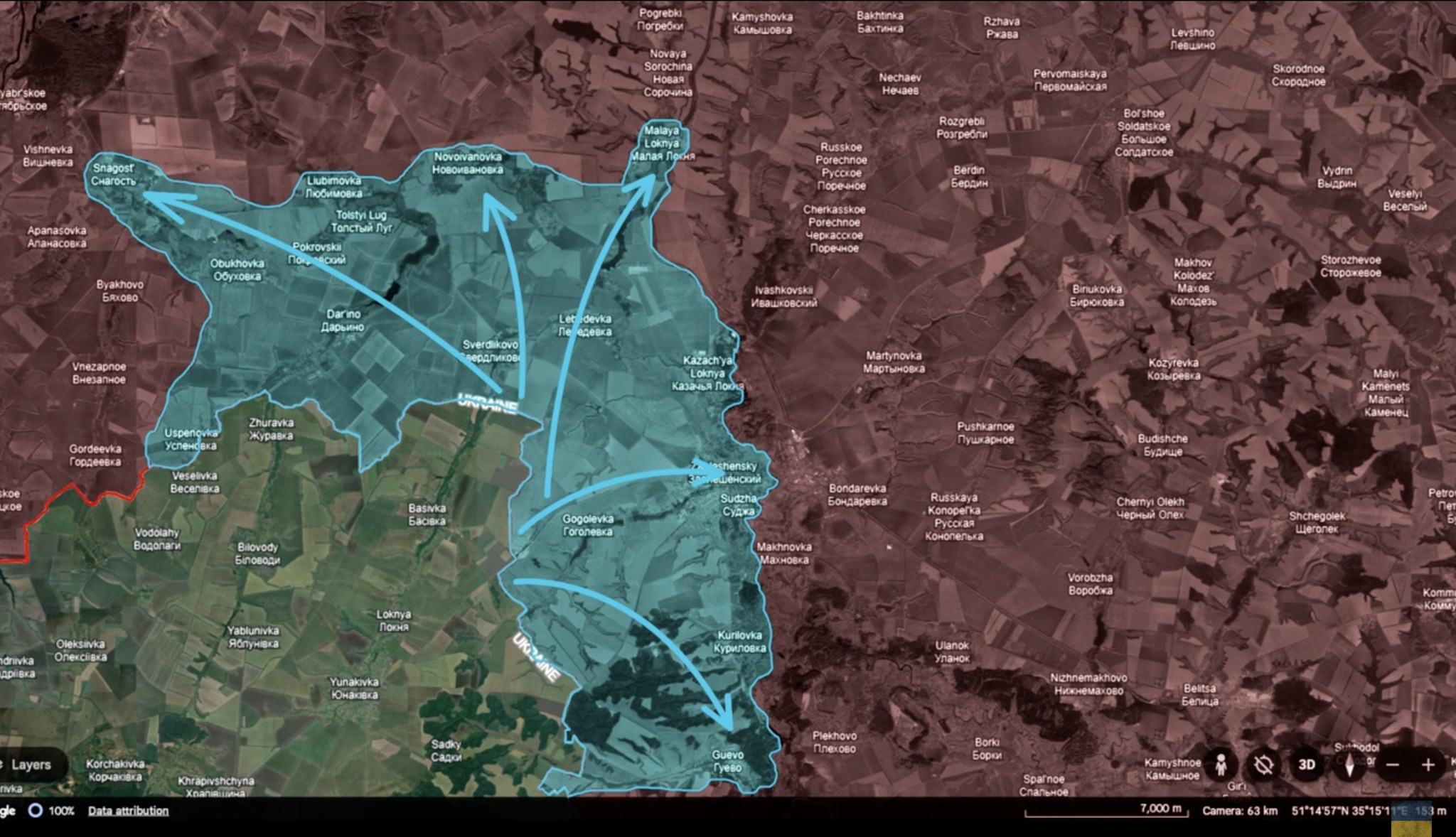Today, there are a lot of updates from the Kursk direction in Russia.
Here, the Ukrainians launched an incursion into the Russian territories and managed a deep breakthrough far beyond Russian defenses.
To put this offensive into perspective, in just three days of active operations, Ukrainians gained more territory in Kursk than Russians in three months in Kharkiv.
The initial goal of the Ukrainian sabotage and reconnaissance force was to swiftly penetrate deep beyond the Russian border using highly mobile units reinforced with armor. These actions were intended to pave the way for the main Ukrainian offensive forces.
The tactic was the following: Ukrainian sabotage and reconnaissance units scout the area for Russian positions, analyzing the terrain, and systematically neutralizing Russian border defenses. Afterward, the main force move into the secured territories to consolidate control.
Ukrainians advance through Sudzha border crossing
The initial assault force was composed of three hundred Ukrainian fighters, supported by eleven tanks and twenty armored vehicles. This force included elite elements from the Eighty-eight and Eighty-second Air Assault Brigades, some of the most formidable units in the Ukrainian army.
The primary Ukrainian assault group stationed in the village of Yunakivka was tasked with eliminating Russian positions at the Sudzha border crossing. Success in this attack would allow Ukrainian forces to utilize the P-Two-Thousand highway to advance toward the regional center, the town of Sudzha.

Meanwhile, another assault group positioned in the village of Novenke, north of Yunakivka, was assigned to seize control of the border villages of Sverdlikovo and Nikolayevo Darina, securing the northern flank of the advance.
Securing control of these two villages would allow the assault force to dominate the highway at Sverdlikovo, effectively cutting off Russian reinforcements from the nearby town of Korenevo. A third group, also stationed at Yunakivka, was tasked with capturing the villages of Guyevo and Kurilovka to protect the southern flank from potential Russian counterattacks.
The offensive began with Ukrainian shelling of the Russian garrison at the Sudzha border crossing. Combat footage from the area shows significant damage to the crossing, with Russian troops being suppressed and forced to take cover in the buildings.

Russians were caught off guard
Additionally, the Russians abandoned a tank at the crossing, as most of their soldiers were caught off guard by the intensity of the Ukrainian artillery barrage.
An attempt by Russian forces to deploy two additional old T-Sixty-Two-M tanks from the town of Sudzha ended in failure, as both were quickly destroyed on the road.
In response, the Russian command deployed a Mi-Twenty-Eight and Ka-Fifty-Two attack helicopters to counter the Ukrainian assault groups.
Ukrainians destroy Russian helicopters
However, the Russian pilots, lacking an accurate understanding of the scale of the Ukrainian offensive and the evolving situation, could not effectively engage the enemy. Both helicopters were eventually shot down. In a video released by Ukrainian drone operators, one can see the Mi-Twenty-Eight being hit and brought down by an FPV drone, a tactic previously unseen in the war.

As their positions at the checkpoint were unsustainable, losses too heavy, and reinforcements destroyed, over forty surviving Russian soldiers at Sudzha checkpoint surrendered to Ukrainian assault groups. Surviving Russian soldiers were taken into captivity, and it is estimated that a total of three hundred Russians surrendered in the Kursk direction.
The Russian forces were small and dispersed along the border, making it easy for the Ukrainians to isolate and eliminate them, given that reinforcements were far away.
As the Ukrainian spearhead successfully destroyed the main Russian formations at the border, the main Ukrainian force took advantage of this success, advancing over ten kilometers (6 miles) across the front toward Sudzha and its flanks.
Ukrainians capture Russian town of Sudzha
Trending Now
This success at the border allowed the Ukrainians to swiftly enter the town of Sudzha, driving the surprised and disorganized Russian forces back to the right bank of the Sudzha River. The Russians had relied on their border guards as the primary defense before the town, but the scale of the Ukrainian assault formations, coupled with their superior firepower and tactics, left the border guards unable to hold their position.
To secure their gains, the Ukrainians deployed heavy air defense systems, including BUK M1s and artillery systems, such as the US-supplied M777 Howitzers, in the captured territory.
This deployment significantly bolstered their firepower and enhanced the security of the offensive, allowing them to more effectively suppress scattered Russian strugglers across the region before launching the main assaults.
By establishing a foothold in Sudzha, the Ukrainians can quickly deploy mobile formations aboard US-supplied Stryker armor vehicles to advance along the Russian regional 38k 004 Road.
The armored Stryker groups utilized their high mobility, firepower, and mechanization to deploy Ukrainian stormtroopers throughout the Kursk region.

This operational strategy allowed them to swiftly cease control of over a dozen villages from isolated Russian forces. Villages such as Malaya Loknya and Liubimovka were caught off guard by the overwhelming firepower and strength of the Ukrainian fighters.
These elite Ukrainian formations were later sent over 35 km (21 miles) behind Russian lines in small armored vehicle groups to examine the Russian defense weaknesses.
Russians would need one year to regain lost territory
This way, the Ukrainian fighters can examine the weak points in Russian defenses to determine the next area of assault.
Upon completing the first phase of the Kursk offensive, the Ukrainians began testing Russian defenses in preparation for potential attacks on the villages of Martynovka and Dmitrikov.
An assault in this direction would enable Ukrainian forces to operationally encircle the Russian units in eastern Sudzha.
The complete capture of Sudzha would provide the Ukrainians with strong positions for both offensive operations and defensive preparations.
Overall, the clever Ukrainian tactic of utilizing mobile sabotage groups in combination with heavy reinforcements, the lack of a coherent Russian response to the Ukrainian incursion into the Kursk oblast, and the reported rate of Ukrainian advance indicate that Ukrainian forces were able to achieve operation surprise along the border with Russia.
The Russian analysts estimate that based on the square area of the captured territory, it would take Russians one year to regain lost territories if the Ukrainians dig in.
In our regular frontline report, we pair up with the military blogger Reporting from Ukraine to keep you informed about what is happening on the battlefield in the Russo-Ukrainian war.

